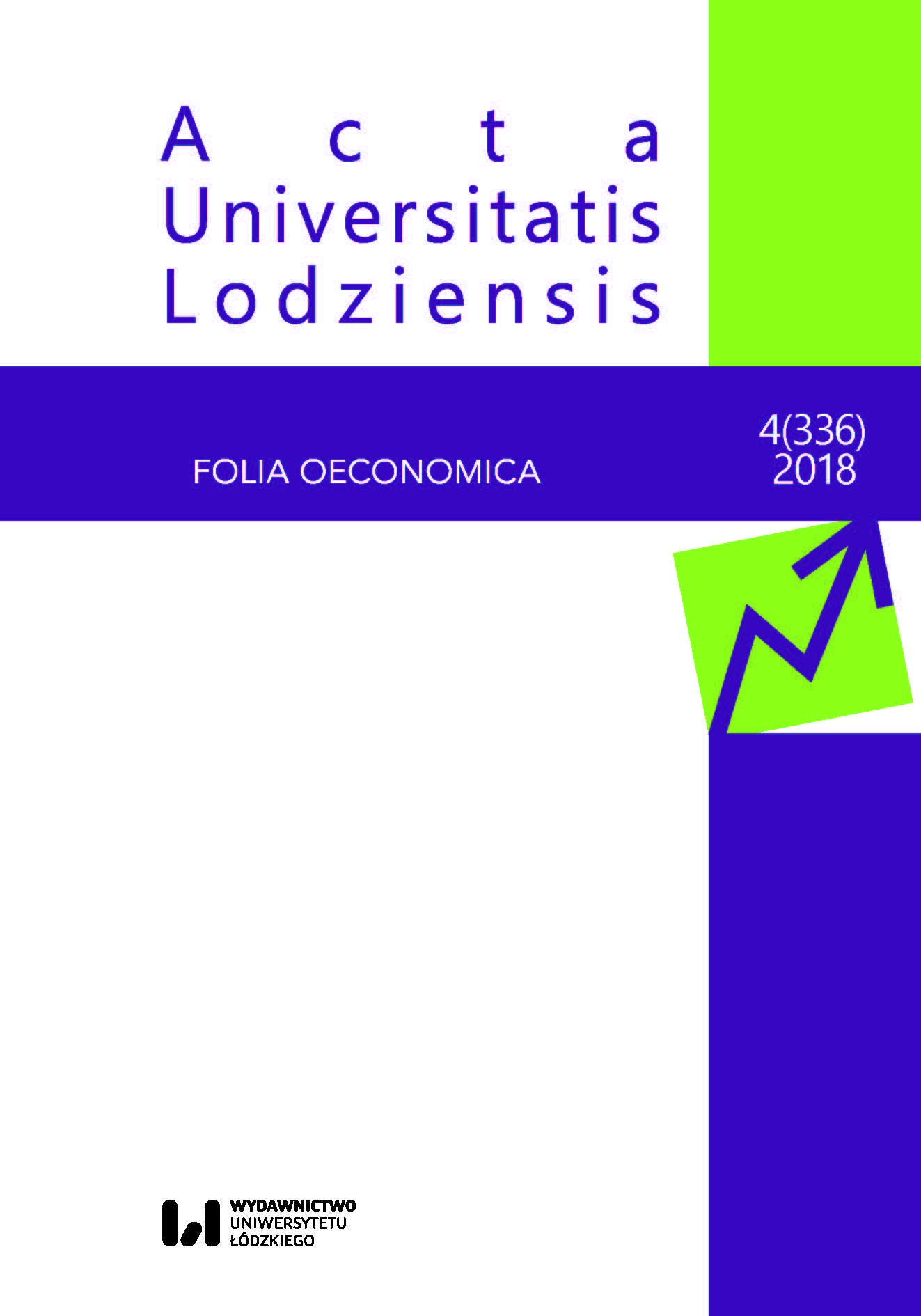Short and Long Term Determinants of the Net International Investment Position Resulting from the Balance of Payments of the European Monetary Union Countries
Short and Long Term Determinants of the Net International Investment Position Resulting from the Balance of Payments of the European Monetary Union Countries
Author(s): Paweł ŚliwińskiSubject(s): Economy, Socio-Economic Research
Published by: Wydawnictwo Uniwersytetu Łódzkiego
Keywords: international investment position; net international investment position; current account; balance of payments; Eurozone; międzynarodowa pozycja inwestycyjna; międzynarodowa pozycja inwestycyjna netto
Summary/Abstract: The paper aims at analysing the level, composition and factors determining changes of the net international investment position (NIIP) of the euro area countries. Although the improvement in the euro area’s NIIP during the period from 2Q2012 to 2Q2016 was largely driven by current account surpluses in 13 out of 19 countries, there is a visible difference between the NIIP changes and their components in the surplus and deficit countries. The group of net foreign assets countries increased its position primarily by running current account surpluses reflecting mainly a positive balance on goods and, on a minor scale, a positive primary income balance. The NIIP in the group of net foreign liabilities countries deteriorated although the cumulative current accounts were in surplus for this period. Here, the current account improvement was largely driven by services which, in contrast to the net foreign asset countries, were in surplus. In turn, the cumulative primary income in the group of net foreign liabilities countries was in minus. Statistical analysis aimed at estimation of determinants of the changes in the NIIPs over the subsequent quarters shows that their short term behaviour was on a large scale positively driven by the changes of valuation effect resulting, for example, from exchange rates and prices movements. It should not be surprising that the signs which indicate the direction of valuation effect on the NIIP pattern are different in the short and long term. It should be stressed that the valuation effect influence decreases over time since valuation gains and losses overlap and largely neutralise each other. Nevertheless, combined losses were higher than total gains and therefore its impact on the NIIP was negative in the analysed period. On the other hand, the EMU current account surpluses were repetitive and persistent, being the main factor behind the improvement of the cumulative euro area NIIP changes. // Celem artykułu jest analiza zmian w międzynarodowej pozycji inwestycyjnej netto (NIIP) oraz czynników determinujących te zmiany w grupie krajów należących do tzw. strefy euro. Mimo że poprawa NIIP w strefie euro w okresie od drugiego kwartału 2012 do drugiego kwartału 2016 roku była spowodowana głównie nadwyżkami w obrotach bieżących w 13 z 19 krajów, widoczna jest różnica między zmianami NIIP a poszczególnymi składnikami rachunku obrotów bieżących w krajach charakteryzujących się dodatnią i ujemną NIIP. Grupa krajów nadwyżkowych zwiększyła swoją pozycję głównie przez zwiększenie nadwyżki na rachunku obrotów bieżących, która jest głównie rezultatem dodatnich sald towarowych i na małą skalę dodatnich sald pierwotny. NIIP w grupie państw deficytowych pogarszała się mimo dodatnich, skumulowanych w tej grupie, rachunków bieżących w analizowanym okresie. Poprawa sytuacji na rachunku bieżącym była tutaj w dużej mierze wynikiem pozytywnego salda usług, a nie towarów (w przeciwieństwie do grupy krajów nadwyżkowych). Z kolei skumulowane salda pierwotne wpływały negatywnie na skumulowane rachunki bieżące. Analiza statystyczna, mająca na celu oszacowanie czynników odpowiedzialnych za zmiany w NIIP w kolejnych kwartałach, pokazuje, że w krótkim terminie zmiany NIIP były spowodowane w dużej mierze zmianami wycen aktywów i zobowiązań zagranicznych. Było to następstwem zmian ich cen rynkowych oraz zmian kursów walutowych. Wpływ efektu wyceny na zmiany NIIP, chociaż dalej negatywny, zmniejszał się jednak w dłuższym okresie, z uwagi na neutralizowanie się w dużym stopniu wahań cen wraz z upływem czasu. Z drugiej strony skumulowane nadwyżki na rachunkach obrotów bieżących w krajach strefy euro były powtarzalne i trwałe, co było głównym czynnikiem wpływającym na poprawę zmian w NIIP.
Journal: Acta Universitatis Lodziensis. Folia Oeconomica
- Issue Year: 4/2018
- Issue No: 336
- Page Range: 209-224
- Page Count: 16
- Language: English

